The Fontaine de Vaucluse is not actually a fountain. It is a natural spring, and one that is considered the 5th largest in the world. Located in at the foot of the Vaucluse Mountains, between the towns of Saumane-de-Vaucluse and Lagnes, this little corner of the Natural Park of Lubéron Valley is one of the most visited sites in Provence.
The site is a popular attraction among French tourists, located in the southern part of France, just outside the former papal city of Avignon and the famous antique town L’Isle-sur-la-Sorgue. The name Vaucluse itself comes from the Latin phrase vallis clausa or “closed valley”.
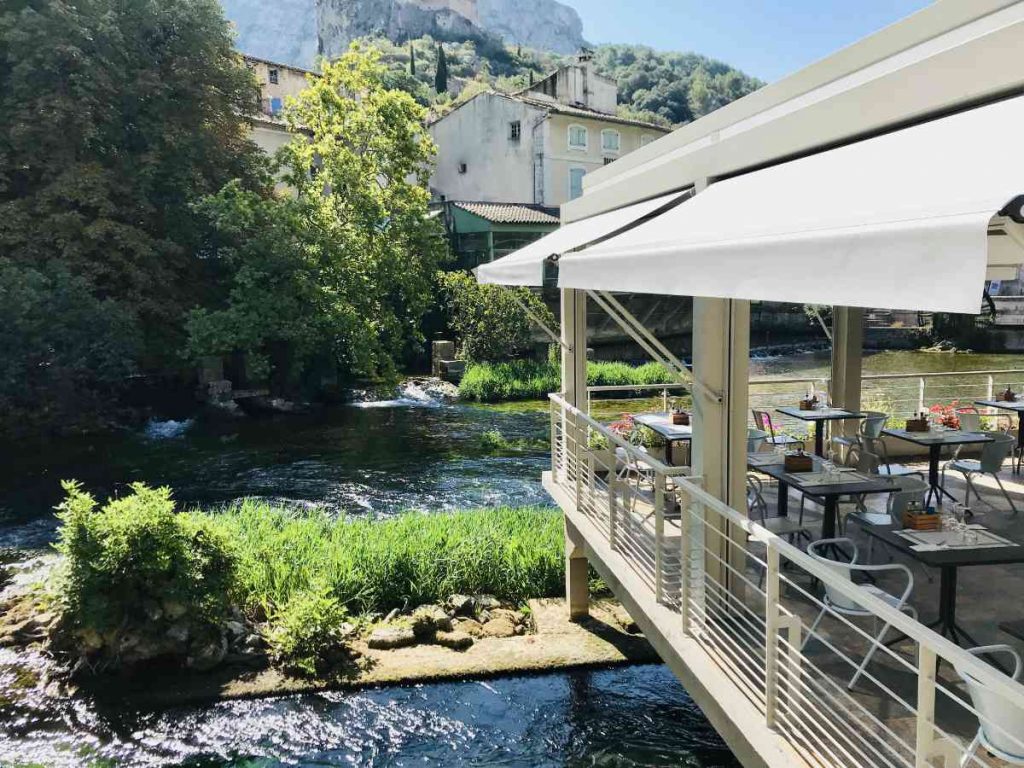
The spring is so deep, even today it is almost impossible to assess where the water is coming from and how deep it really goes. With its clear waters that hover between green and the deepest color of blue, the Fontaine de Vaucluse is an amazing natural water spring in the heart of Provence.
And it is a wonderful way to spend a few hours, if you are in this corner of Provence. With nature all around, this preserved little village still has plenty to see and do. So let’s get to it shall we? Allons-y!
History of the legend
Fontaine de Vaucluse is believed to be the spring which, according to legend, marks the beginning of the River Sorgue, deep down in its interior. The place has been a major “cult” attraction since antiquity, with the Sorgue being used as a trade route by the Phoenicians of nearby Massalia (Marseille) and later the Romans.
Even back then the spring attracted with visitors, who flocked here to admire the crystal clear waters and supposedly healing properties. Because of this, next to the spring was constructed a village of the same name, Fontaine-de-Vaucluse.
During the Middle Ages, as part of the village, a monastery was built here. In addition, many people including the famous French poet Pétrarque, came to stay here. Eventually came the paper mills as people learned to harness the power of water.
Today, as it was in the past, the waterways are surrounded by the limestone cliffs of the Vaucluse Mountains. It forms a natural pool, providing enough force to the river Sorgue that it has several arms and tributaries.
Things to do at Fontaine de Vaucluse
With less than 1000 people living full time in Fontaine de Vaucluse, this is a village that is geared towards the spring, and its surrounding tourism.
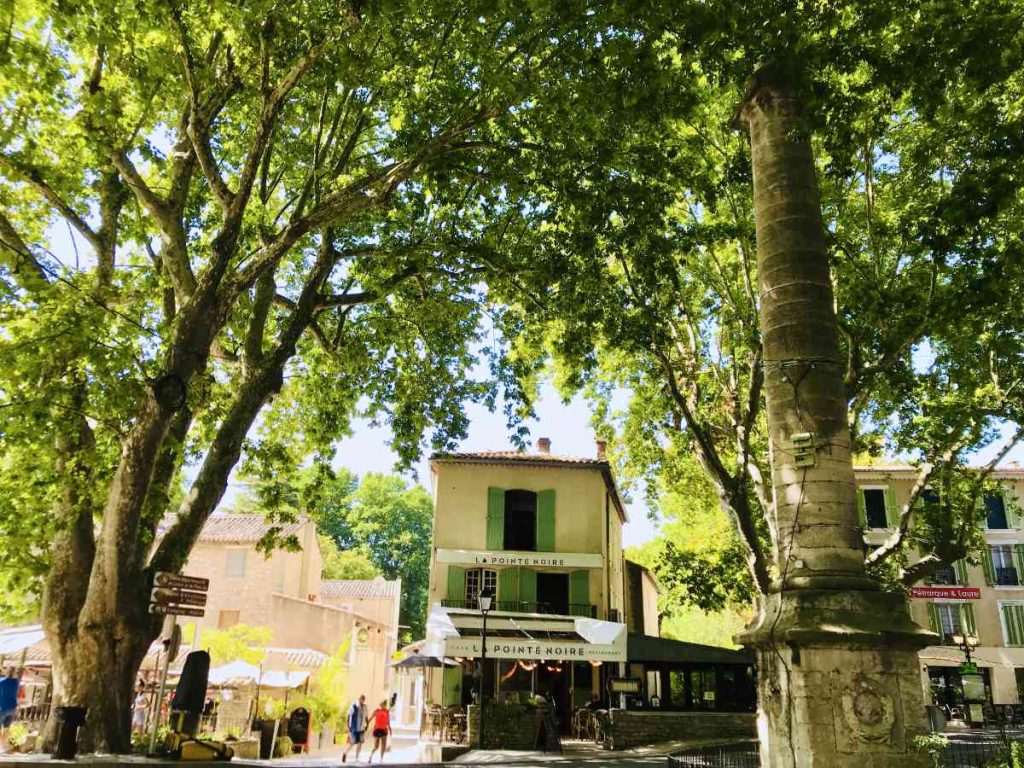
With a handful of restaurants and souvenir shops, a walk about town is a wonderful way to take it all in. Some of the restaurants have beautiful views of the water, and are a lovely place to have lunch.
There is a large parking lot on the hill above the town for tourists coming by car. If you are planning on having lunch there, I suggest making a reservation before heading to view the spring, as restaurants can fill up fast in the summer time. You can read more about local foods and drinks to try in Provence here.
The Spring
From the center of town, you will notice a pathway taking you up a small hill towards the spring. The pathway has plenty of small kiosks with ice cream stands, drinks, etc. which is quite useful on those doggone days of summer in Provence.
While it is not the most wheelchair or stroller-friendly, there is a good portion that is accessible. The path follows along the water, towards the cliffs until you get to the spring, which is deep underground and part of a network of caves.
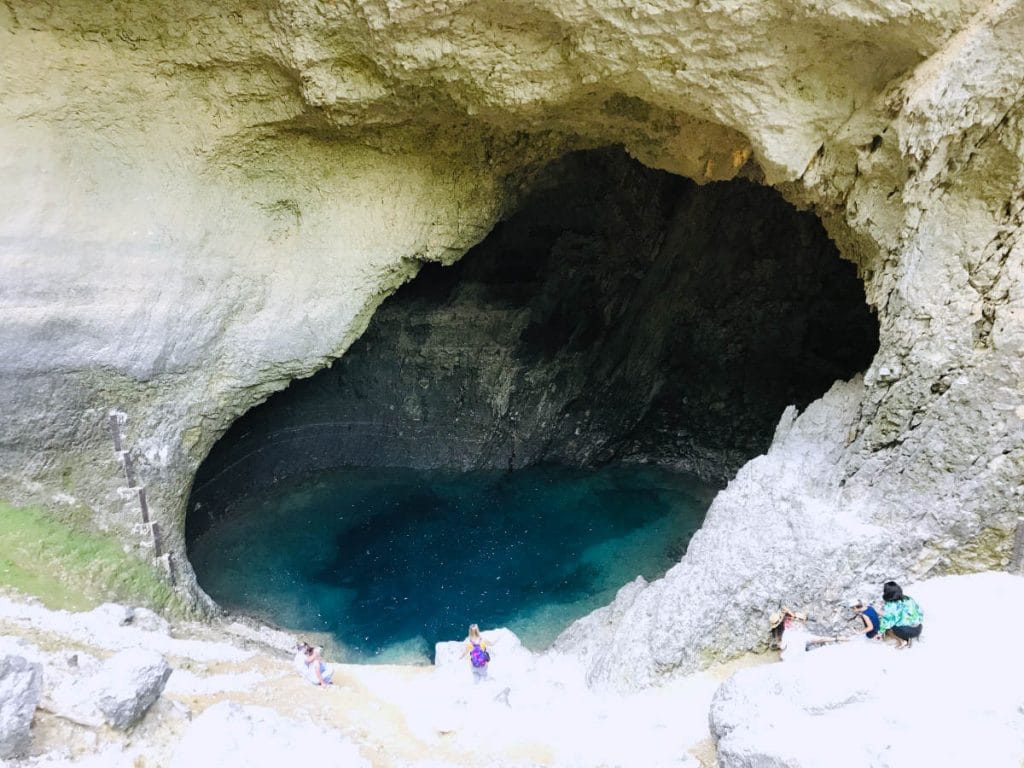
The conditions of the waterway and the spring depends on the time of year you visit. In March, the fountain of Vaucluse surges for a few weeks and then subsides. The increased flow of water causes the Sorgue river to flood. The mechanism behind the surging remains somewhat of a mystery.
The spring itself is situated at the feet of a steep limestone cliff 230 metres high, and has an annual flow of 630 million cubic metres. There are signposts and a barrier advising people to not cross a certain point as the path is not stable, but during low tide you cannot see the spring from that point.
We saw a lot of people hopping over the fence, but obviously you are risking your own safety when you do so. The path is slippery. In addition, do not attempt to enter the water, the spring is so deep, even famed diver Jacques Cousteau ran into trouble when he dove here, looking for the bottom.
The Paper Mill
In the 18th century, there were 11 moulins à papier (papermill factories) employing 500 people in the Vaucluse region. Four of these mills were at in Fontaine-de-Vaucluse.
With its clear water and flowing water, the spring was a natural source of energy to power the waterwheels to make them turn and crush the raw materials into paper.

Those original papermills closed in the 19th century, but in the 1970s a new papermill called the Vallis Clausa opened, on the pathway to the spring. These days it is has been converted to a showcase, along with souvenir shops.
You can walk through the showcase, and even pick up a few samples to take home as souvenirs. The papers are handcrafted with cotton and linen fibers, and imbibed with the scent of various natural flowers and plants, depending on your preference.

How to get to Fontaine de Vaucluse?
If you are coming from Paris, it takes around 7 hours by car to get to Fontaine de Vaucluse. However, there is a high-speed TGV train which can bring you from Paris to Avignon in 3h30 from where you can drive 40 min to Fontaine de Vaucluse.
The largest international airport is in Marseille, which is about 55 miles (90km) away. Avignon airport is 10 miles (35km) away, but does not have as many international connections. You can also take a tour from Avignon that will bring you to the Fontaine de Vaucluse and other nearby sights.
How many days should you spend?
One afternoon is sufficient in Fontaine de Vaucluse, to climb to the spring water source, walk around town, and enjoy a lovely meal.
Where should you stay?
I recommend staying in nearby Avignon or nearby Isle-sur-la-Sorgue to make the most of your trip to this part of Provence:
Avignon:
- €€€ – Kyriad Avignon – Palais des Papes
- €€€€ – Hôtel de l’Horloge
Isle-sur-la-Sorgue:
- €€€ – Hotel Les Nevons
- €€€€ – Grand Hôtel Henri – Les Collectionneurs
- €€€€€ – La Maison sur la Sorgue – Esprit de France

So will you put Fontaine de Vaucluse on your travel bucket list? If you enjoyed that post, you may want to read more about traveling around Provence and the French Riviera. A bientôt!
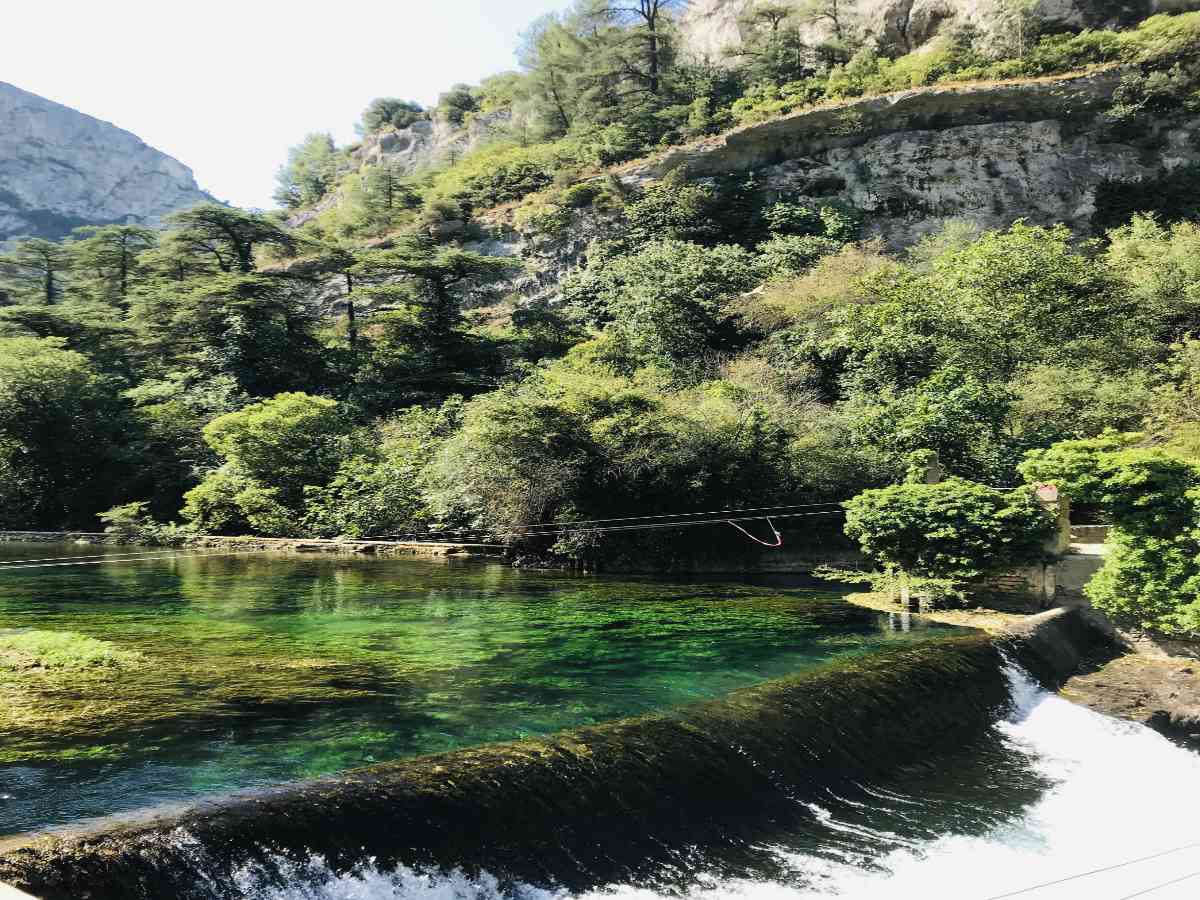
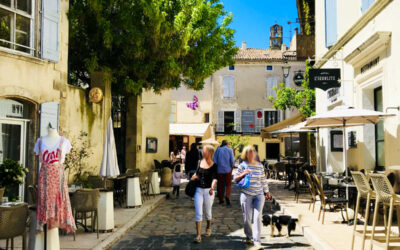

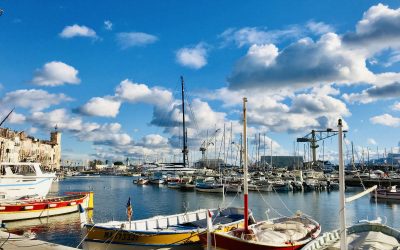
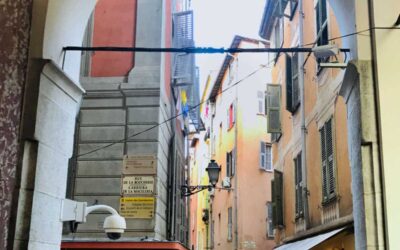
Excellent info on Fountaine de Vaucluse. Thankyou
You’re welcome! It is definitely worth a visit :))